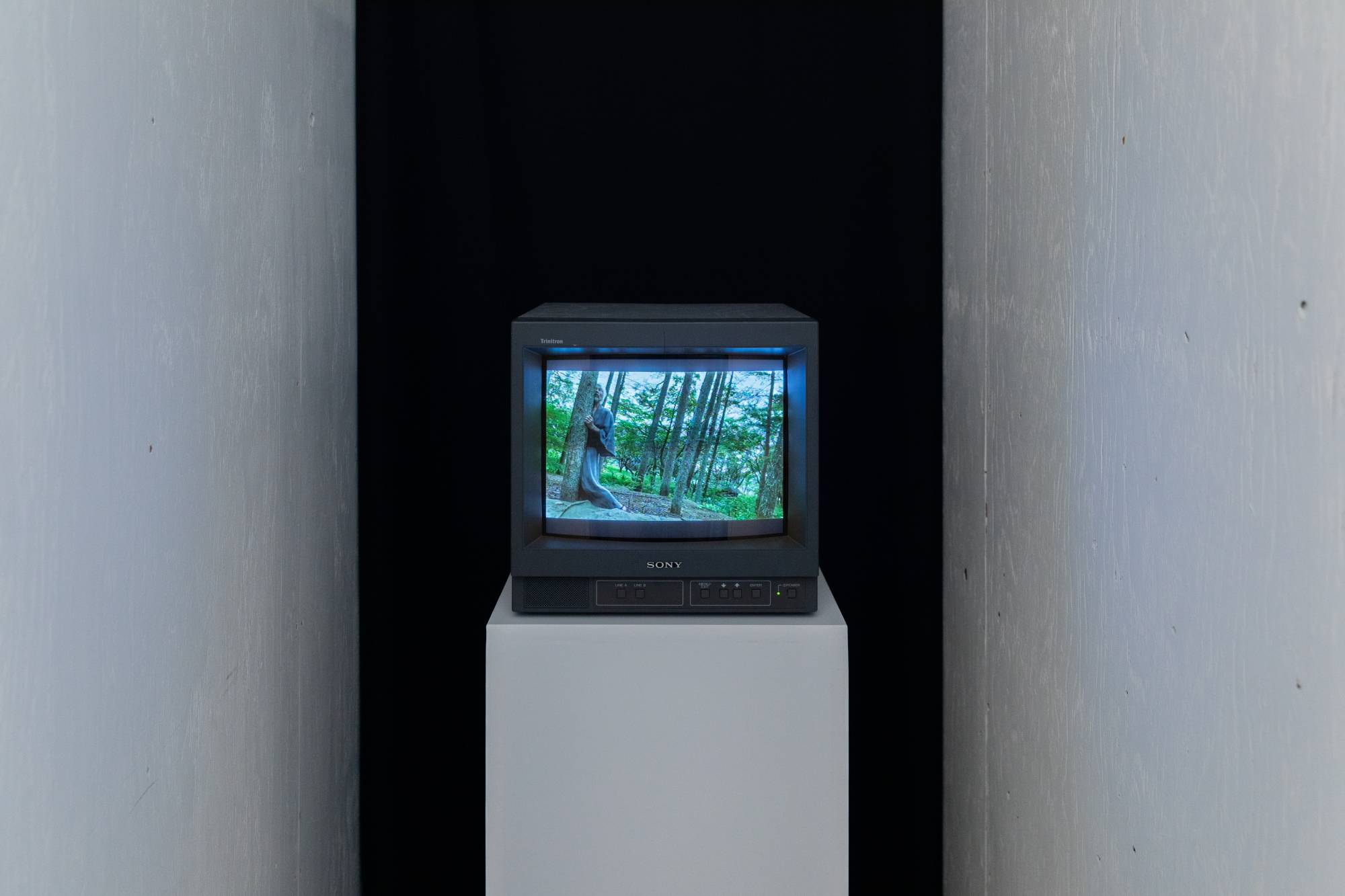A multidisciplinary collection of work from Japanese and American artists at the Fergus McCaffrey gallery in Tokyo explores the body and transgression of boundaries at a time when self-isolation and caution are the order of the day.
In Min Tanaka’s 15-minute video piece, the 75-year-old dancer first appears as a disembodied arm snaking between two rocks beneath a swiftly flowing stream. He then is seen as a living mass gingerly rising up beside a tree; sometimes like a vine that uses the tree for support, but also as an old man with desperate affection for life and without the burden of consciousness. The sound of cicadas, alternating with a distorted electronic score, drifts in and out as Tanaka twists slowly and shakily, turning movements normally associated with the effects of debilitating nervous system disorders into a choreographed vibration that acts as a perfectly appropriate resonance with the pulse of nature. At the end of Tanaka’s recorded performance, the artist is an unmoving object on the forest floor, and finally a ghostly presence standing in the corner of a clearing made into a primitive stage using four felled trees.
The work is shown on a small cathode-ray tube type monitor in a space only big enough for one person at a time, and is sandwiched between installations by American artists Matthew Barney and Carolee Schneemann (1939-2019), and a large action painting by Kazuo Shiraga (1924-2008).


















With your current subscription plan you can comment on stories. However, before writing your first comment, please create a display name in the Profile section of your subscriber account page.